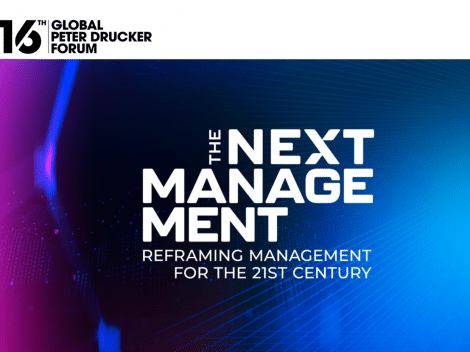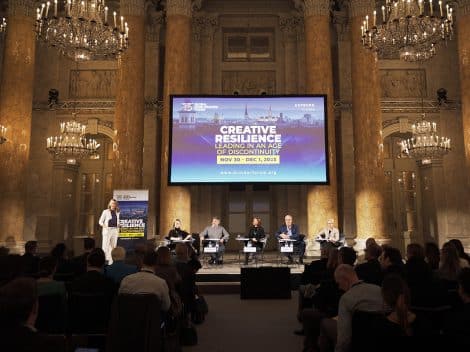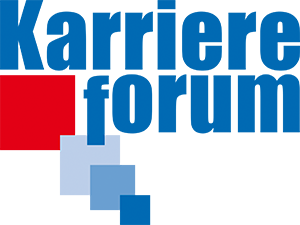In the ever-evolving world of organizational leadership, certain ideas have proven to be damaging to both results and reputation. Despite being disproven, these “zombie ideas” refuse to die. They stagger on, wreaking havoc in the modern workplace, diminishing productivity, creativity, and morale. We’ve borrowed the title from the program of the 16th Global Peter Drucker Forum, which will be held in mid-November in Vienna, where top executives and renowned thinkers will gather to discuss nothing less than the future of management and leadership. One of this year’s discussions focuses on how leaders can eliminate outdated management practices and foster a shared, innovative, and value-creating leadership style.
Let’s explore six zombie management ideas and why they need to go.
1. Everybody’s Darling Management – Or Embracing the Advantage of Being “Bad”?
The days of trying to appeal to everyone—of being “everybody’s darling”—are over. As Philip Kotler argues (1), in a world divided by ideologies, values, and expectations, simply being client-oriented or digitally savvy is no longer enough. Businesses must declare what they stand for and make decisive choices.
Being vague about critical issues no longer works. Brands need to take clear stances on matters that impact their stakeholders and society at large. Are we against child labor, or do we prioritize cheap production costs above human rights? Today’s leadership requires choices that go beyond simply being liked by all—it demands a commitment to values, not neutrality.
Adrian Wooldridge is among the few who address the “competitive advantage of being ‘bad'”—companies that reject certain mainstream policies they do not endorse may even see stronger bonds among their employees and stakeholders, despite the stigma imposed by outsiders. As Wooldridge points out, “the more vilified, the stronger the bonds become.” However, being “bad” by itself is not a guaranteed path to success. He also calls out the flaws of “dark side” leaders who damage morale and harm long-term success (2).
2. One-Size-Fits-All Leadership Styles
No two organizations are the same, yet the idea persists that one leadership style can work universally. This zombie idea prevents leaders from adapting to the unique needs of their teams, industries, or markets. Just as no two individuals are identical, no single leadership method suits all situations.
Situational leadership, which adapts management approaches based on specific contexts and employee needs, consistently yields better results than rigid, one-size-fits-all styles.
3. Hiring for “Cultural Fit”
Hiring for “cultural fit” often serves as a code for maintaining homogeneity in the workplace. This outdated practice prioritizes finding employees who align with existing organizational values and behaviors, often at the expense of true diversity. While cultural fit may seem like a positive concept, it can reinforce groupthink, stifle innovation, and exclude important and new perspectives.
Research by Alex Pentland (3) has shown that diversity generates wealth, while seclusion leads to decline. Organizations with diverse teams—whether in background or thought—consistently outperform more homogeneous ones. Diversity fosters creativity, resilience, and innovation, while hiring for ‘cultural fit’ can hold companies back.
4. The Overemphasis on Formal Education for Leadership Roles
Many organizations continue to prioritize formal education—especially degrees from prestigious institutions—when selecting candidates for leadership positions. While education is important, overemphasizing it as a primary qualification can exclude highly talented individuals who may lack formal degrees but possess practical experience, emotional intelligence, and creativity.
Great leaders are often shaped by their experiences, emotional resilience, and ability to connect with others, rather than by the diplomas they hold. It’s time to focus on leadership qualities like empathy, adaptability, and the ability to inspire teams.
5. Productivity Still Measured in Terms of Production Lines
In an era where knowledge workers drive the global economy, it’s astonishing that many organizations still measure productivity using metrics designed for manufacturing lines. This way, we fail to address the realities of modern work, where creativity, problem-solving, and collaboration are far more valuable than repetitive tasks (which should have been automated by now).
Forcing knowledge workers to waste time on bureaucratic drudgery—such as excessive reporting or unproductive meetings—undermines the very productivity and agility that organizations strive to achieve. Instead, leaders should focus on eliminating unnecessary bureaucracy, equipping employees with the tools and autonomy they need to excel, and fostering a balance between creativity and efficiency. As Northcote Parkinson rightly observed, bureaucracy tends to expand to fill the available time (and beyond, I might add), making it essential for management to actively curb such growth.
6. Command-and-Control Leadership
The notion that leaders must dictate every move and monitor every task is the epitome of a “zombie idea.” Yet, it persists in many organizations. Command-and-control leadership stifles innovation by centralizing decision-making power in the hands of a few, which limits the ability to navigate the complexities of today’s business challenges. Such companies, however, are slowly disappearing, fading away as a natural process of organizational evolution. Today’s leaders focus on making their teams feel safe and empowered – as Amy Edmondson (4) and Linda Hill (5) point out.
Today’s business environment requires leaders who empower rather than control, who know that if leaders had to make all the decisions, it would spell disaster (to echo Howard Sublett), and who measure productivity by meaningful output, not outdated metrics.
We’ve long understood what effective leadership looks like, but as Gary Hamel pointed out at the last Drucker Forum, ‘We’ve been talking about new management for ten plus years. Yet, we don’t see much of a change.’ It’s clear that knowing what works is not enough. Change requires collective action and commitment. Together, let’s gather at the Global Peter Drucker Forum on November 14 and 15, 2024, at the Hofburg in Vienna to collaborate on how we can drive meaningful progress, improve our organizations, and empower our leadership teams for the future.
16th Global Peter Drucker Forum: “The Next Knowledge Work” www.druckerforum.org
If you register in September claim a €160 discount with the code DT9L
Program: https://www.druckerforum.org/2024/program/
Speakers: https://www.druckerforum.org/2024/speakersmoderators/
Among the lineup of speakers: Amy Edmondson (Harvard Business School and No. 1 of the Thinkers 50), Kevin Nolan (General Electric Appliances), Stefan Asenkerschbaumer (Robert Bosch GmbH), Richard Cockett (The Economist), Hamilton Mann (Thales), Liz Cane (Palo Alto Networks), Tammy Erickson (London Business School), Sarah Green Carmichael (Bloomberg), Sabine Herlitschka (Infineon), John Walsh (Fujitsu), John Kay (Oxford), Gillian Tett (Harvard Business Review), und David Weinberger (Harvard University).
(1) Kotler, Philip; Kartajaya, Hermawan; Setiawan, Iwan (2021) Marketing 5.0: Technology for Humanity. John Wiley & Sons.
(2) Wooldridge, Adrian (2023) How to Tap the Competitive Advantage of Being ‘Bad’. Bloomberg Opinion, 14 June 2023. https://www.bloomberg.com/opinion/articles/2023-06-14/being-bad-confers-a-competitive-advantage
(3) Pentland, Alex (2015) Social Physics: How Social Networks Can Make Us Smarter. Penguin Books.
(4) Edmondson, Amy (2023) Right Kind of Wrong: The Science of Failing Well. Simon Element.
(5) Hill, Linda (2014) Collective Genius: The Art and Practice of Leading Innovation. Harvard Business Review Press.









